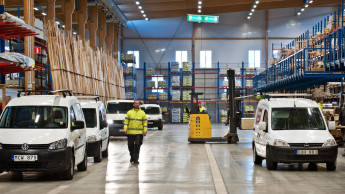

deep insights, facts & figures

Certain shifts have become evident in the European market for cut flowers and pot plants over the past year
Sales of bedding and balcony plants developed more positively in the major European markets in 2009 than did the flower and plant market overall. A number of important customer countries even report an increase in their imports of potted plants, especially bedding, balcony and garden plants. However, the 2009 economic downturn is now also having an effect on the northern and eastern European cut flower markets. In 2008 it was mainly consumers in western and southern Europe, above all in the United Kingdom, who severely restricted the amount they spent on flowers and plants. Now, on the basis of the AIPH Yearbook and other sources, Dr Susanne Lux of MEC (Marketing and Ethics Consulting) has established that consumers in other parts of Europe have cut back on their spending as well. Import deliveries are indicators of this development. Apart from a general fall in sales, it is apparent that deliveries from non-EC countries are playing an increasing role. The Netherlands have observed this with regard to their exports to Russia, and third country imports are also recording growth rates in other markets. In many European countries consumers have reduced their purchases of cut flowers. Up to the end of September 2009, the value of cut flower exports from the Netherlands alone to European purchasing countries sank by 10 per cent. Again it was the British cut flower market that was particularly affected. At the end of 2008 exports to Great Britain were already almost 20 per cent lower than the previous year, and by the end of September 2009 they had fallen by another 17 per cent. But other European cut flower markets, which had been stable up to the end of 2008, also shrank considerably in 2009. The first nine months of 2009 saw the collapse of previous growth markets in eastern Europe, and of stable markets in northern Europe as well. In these markets the Dutch wholesale organisation HBAG has observed increasing competition from third country imports originating in Africa and Central or Southern America, and also coming from domestic production. In these circumstances the German cut flower market, the largest in Europe, seemed almost to be holding steady. The fall in imports was comparatively low in Germany. The development in the potted plant market was much less consistent. In 2009, for example, the growth of imports into the German market in particular, along with an increase of imports to France, Belgium and Switzerland, stabilised the potted plant market in…
Related articles
Read also

 Menü
Menü












 Newsletter
Newsletter